 Image search results - "Saga" Image search results - "Saga" |
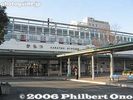
JR Karatsu Station
|
|
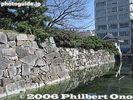
Higo Moat and turret (?)This is near the Karatsu City Hall. From Karatsu Station, it takes about 25 min. to walk to the castle tower.
肥後堀
|
|

From late April to early May, five long strings of giant carp streamers swim in the air high above the Sagami River in Sagamihara, Kanagawa. This event was started in 1988.
|
|
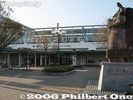
JR Karatsu Station
|
|
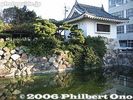
Turret (?)
|
|

There are five rows of streamers. In Japan, the koi carp is regarded as a symbol of valiant manhood because it swims up the river against the rapids.
|
|

Kunchi monument at Karatsu StationKaratsu's most famous festival is the Hikiyama Kunchi Festival where large floats are paraded around.
|
|
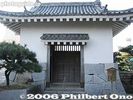
The turret turned out to be a public toilet...Looked nice enough to photograph, but when I walked around it, it smelled like the toilet it was.
|
|

The cable length is 250 meters and 13mmm thick. There are about 1,200 carp streamers. They are reused every year and donated by local families. (I also noticed a few advertising carps.)
|
|
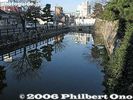
Higo Moat
|
|
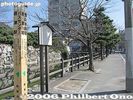
Sightseeing marker in English
|
|
|
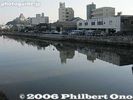
River and castle in the distance
|
|

Hikiyama Float Exhibition Hall曳山展示場
|
|
|
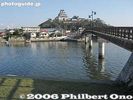
Bridge to castle城内橋
|
|
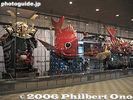
Inside Hikiyama Float Exhibition HallKunchi festival floats are displayed.
曳山展示場
|
|

Sagami River Koi-nobori
|
|
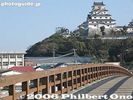
Jonai Bridge to castle城内橋
|
|
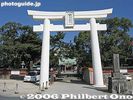
Karatsu Shrine
|
|
|
|
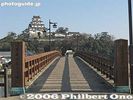
Jonai Bridge to castle城内橋
|
|
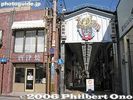
Gofuku-cho shopping arcade
|
|
|
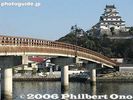
Jonai Bridge to Karatsu Castle城内橋
|
|

Gofuku-cho shopping arcade
|
|
|
|

Furusato Kaikan, next to the station
|
|

The longest carp is 10 meters.
|
|
|
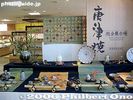
Inside Furusato KaikanKaratsu-yaki pottery is displayed and sold.
|
|
|
|
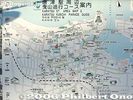
Map of Karatsu
|
|
|

Along the river were food stalls.
|
|
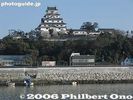
Castle tower and outer wall
|
|

Festival site
|
|
|

Cable anchor
|
|
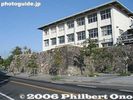
Stone wall and high school next to castle
|
|
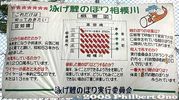
Statistics
|
|
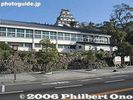
High school and castle tower
|
|
|

Steps to castle towerIf you don't want to climb the 231 steps, you can pay to use the elevator.
|
|
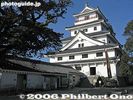
Castle tower, reconstructed in 1966.A gift shop is on the left.
|
|

Castle tower
|
|
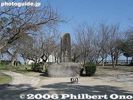
Castle tower grounds
|
|

Castle markerIt says "Karatsu Castle Site."
|
|
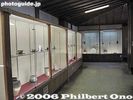
Inside castle tower, a local history museum
|
|
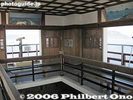
Top floor of castle tower
|
|
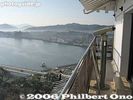
Castle tower balcony
|
|
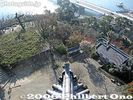
View from castle tower
|
|
|
|

Takashima island
|
|
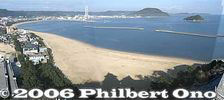
Nishinohama BeachNotice the castle's shadow at the bottom.
|
|

Castle's shadow
|
|
|
|
|
|
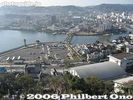
View of bridge to the castle
|
|
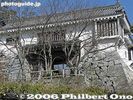
Yagura-mon Gate, main gate to enter the castle櫓門
|
|
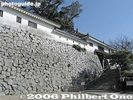
Castle wall and Yagura-mon Gate
|
|
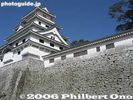
Castle tower
|
|
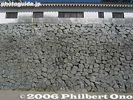
Castle wall
|
|
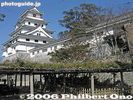
Wisteria bed and castle tower
|
|
|
|
|
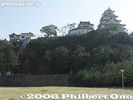
View of castle from the beach
|
|

Stone wall path parallel to the beach
|
|
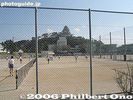
Karatsu Higashi High School and castle tower
|
|
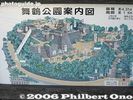
Castle mapThe castle is within a park called Maizuru Park. Another name for the castle is "Maizuru Castle."
|
|
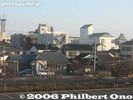
Karatsu Castle from the train
|
|

JR Asagaya Station is slightly decorated with Tanabata streamers.
|
|

JR Asagaya Station during the Tanabata Matsuri in early Aug. Get out the south (minami) exit of the station.
|
|

For five days centering on Aug. 7, a shopping arcade called Asagaya Pearl Center holds the Asagaya Tanabata Matsuri featuring colorful streamers and popular characters festooning the shops. These photos were taken in Aug. 2009.
|
|

The Asagaya Tanabata Matsuri started in 1954 by local merchants to attract more customers.
|
|

Entrance to Asagaya Pearl Center. Originally, it had no roof. But in 1962, a roof was built, making it indoors and convenient for tthe tanabata festival.
|
|

Inside Asagaya Pearl Center during Tanabata Matsuri in early Aug.
|
|

The tanabata decorations were quite impressive.
|
|

The Asagaya Tanabata Festival is characterized by these giant characters hanging above, making it pretty unique.
|
|

The festival attracts a huge crowd, and the decorations have much improved since the last time I saw this years ago.
|
|

The festival is said to have originated from a Star Festival in China. According to Chinese legend, east of the Milky Way there was a Heavenly King whose daughter worked as a weaver. However, when she married a herdsman, she quit weaving.
|
|

This angered her father who banished the herdsman to the other side of the Milky Way. He allowed the two to meet only once a year on the evening of the seventh day of the seventh month (according to the lunar calendar).
|
|

The weaver is represented by the Vega star and the herdsman by the Altair star. As a prayer to produce better arts and crafts, the Imperial Court and the warrior class paid homage to these two stars from ancient times. This practice spread to the masses.
|
|

Asagaya Tanabata is unique to have the year's popular characters and themes among the decorations. Moomin
|
|

Flatfish
|
|
|
|
|
|
|
|
|
|
|

Asagaya Tanabata Matsuri
|
|
|
|
|
|
|
|
|
|
|
|

Asagaya Tanabata Matsuri, Tokyo
|
|
|

Space shuttle was included because of Wakata Koichi who stayed in space for a few months in 2009.
|
|
|

Pikachu
|
|
|
|
|
|
|

Anpan Man
|
|
|
|
|
|

At the end of the arcade, there is an outdoor shopping mall going to the main road.
|
|

Umbrellas
|
|
|
|
|
|

Religious and ceremonial areaYoshinogari is a huge historical park near Yoshinogari Koen Station on the JR Nagasaki Line, not too far from Saga Station.
The park consists of a number of areas, each having a distinct function. This area has buildings used for religious ceremonies.
|
|
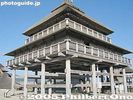
Main worship hallThis is the largest structure with three floors. One was used for ancestral worship and another floor was used for important meetings.
|
|

Watch tower
|
|
|
|
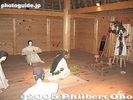
Inside main worship hall, ancestral prayers
|
|
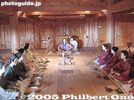
Inside main worship hall, meeting room
|
|
|
|
|

Burial moundsA large clay pot served as the coffin.
|
|
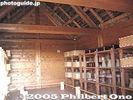
Inside a storehouse
|
|

Storehouses
|
|

Store house for sacred offeringsSacred offerings for the gods such as sake and silk were made and stored in these huts.
|
|
|
|
|

Museum
|
|
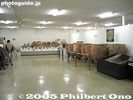
Inside museum
|
|
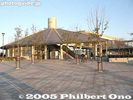
JR Yoshinogari Koen Station
|
|
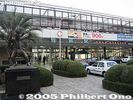
JR Saga StationSaga Castle is a short bus ride from Saga Station.
|
|
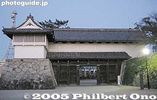
Saga Castle gateThis is pretty much the only building left of Saga Castle. Otherwise, there are stone walls and moats.
Saga Castle was completed in 1611 when the first lord, Nabeshima Katsushige moved in. The castle experienced major fires in 1726 and 1835.
|
|
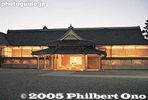
Saga Castle palace, rebuilt in 2004 after 3 years of construction. 佐賀城本丸歴史館This is a magnificent and accurate reconstruction of the palace built by the 11th Saga lord, Nabeshima Naomasa, in 1838 after a fire razed the castle.
|
|

In Japanese, it is called the Saga-jo Honmaru Rekishikan. It is a ridiculously spacious historical museum.
|
|
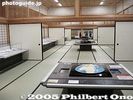
Exhibition hall
|
|

Corridor
|
|
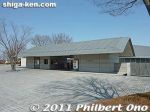
Gate to Sagawa Art Museum. Admission 1000 yen for adults. Operated by the Sagawa Kyubin door-to-door courier company. 25-min. bus ride from JR Moriyama Station. MAP
|
|

Sagawa Art Museum has twin buildings housing works by painter Hirayama Ikuo, sculpture by Sato Churyo, and tea bowls by potter Raku Kichizaemon.
|
|

Opened in 1998 to mark the 40th anniversary of the company's founding. Highly recommended. Museum has a Shinto shrine architecture. Built on the company's former truck depot.
|
|
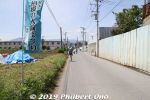
Held annually on May 4 and 5 along the Sagami River from 10 am to 4 pm. Nearest train station is Sobudaishita Station on the JR Sagami Line (20-min. walk to the festival site). They have shuttle buses from the train station to festival site, but I walked.
|
|
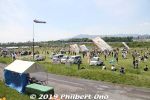
The site is a riverside park. They fly the giant kite a few times each day depending on the wind. Photos were taken on May 5, 2019.
|
|
|
|
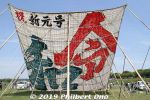
In May 2019, the giant kite celebrated the new Reiwa Era by having the kanji characters for Reiwa on the giant kite.
|
|
|
|
|
|
|
|
|
|
|
|
|
|
|
|
|
|
|
|
|
|
|
|
|
|
|
|
|
|
|
|
|
|
|
|
|
|
|
|
|
|
|
|
|
|
|
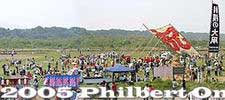
Sagami Giant Kite festival is held annually on May 4 and 5 along the Sagami River bank. The site is near JR Sobudaishita (相武台下) on the JR Sagami Line.
|
|

Lean-to shade.
|
|
|
|

Rear view
|
|

Entertainment during Sagami Giant Kite Festival
|
|

Take off of a smaller kite
|
|
|
|
|

Take off of another smaller kite
|
|
|
|
|
|

Successful flight
|
|

Anchor
|
|

Preparing the big one.
|
|
|
|

Bamboo poles used to prop up the giant kite.
|
|

Moving the giant kite to launch site
|
|
|
|

Spectators watch along the side and rear.
|
|
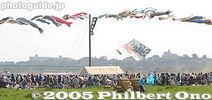
Sagamihara city is adjacent to Zama city which also held their own giant kite festival on the same day adjacent to Sagamihara's site. This is a launch of Zama's giant kite which soon went back to the ground due to inadequate winds.
|
|

The site is cleared of people before the launch.
|
|

Inadequate winds. The kite struggles to lift off.
|
|

The kite went back down almost immediately after hovering a few feet above ground.
|
|
|
|
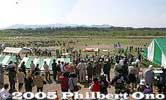
Panorama of festival site.
|
|
|

Preparing the giant kite
|
|
|
|
|
|

Moving the kite to launch point
|
|
|
|
|
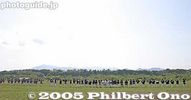
Kite pullers
|
|
|

And we have lift off!
|
|
|

TakoKites in the shape of an octopus is common because the Japanese word for kite is "tako" which is the same pronunciation for the word octopus in Japanese.
|
|

Guest kite from Yokaichi, Shiga PrefectureThis is a smaller version of their giant kite. Yokaichi (Higashi Omi) also holds a giant kite festival in May.
|
|

Yokaichi's anchor truck
|
|

Beautiful lavendar
|
|
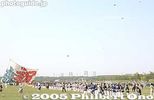
Another launchThey fly the kite a few times during the festival days.
|
|
|
|
|
|
|
|

Rope anchor
|
|
|

DisassemblyThe paper is actually large strips that can be removed and rolled up.
|
|
|
|
|
|
|
|
|
|